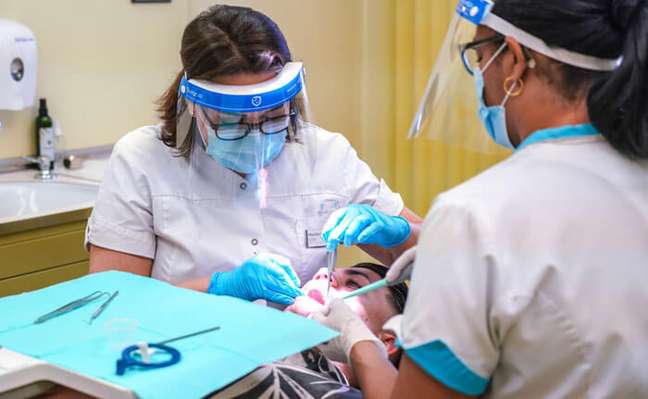For patients with orofacial pain, phytocannabinoids have proven their therapeutic potential

We have recently seen a great deal of excitement on the subject of prescribing and using phytocannabinoids. The argument is still permeated by prejudices, controversial regulations and doubts (as This article of the Unbox Project) – but above all of hope.
The important results achieved in chronic, degenerative and refractory diseases (such as autism, multiple sclerosis, dementia, chronic pain and many others) are the main culprits for hope.
In dentistry, prescriptions already show important results in temporomandibular disorders and orofacial pain, based on wakefulness bruxism, anxiety, stress and even sleep deficit.
In this “comorbidity package” which includes the patient with orofacial pain and temporomandibular disorders, most cases combine chronic orofacial pain, tension headaches, unrefreshing sleep and depression. These conditions usually become chronic and cause a significant deterioration in the quality of life, leading to the onset of other diseases, such as obesity, diabetes, cancer, heart disease, lack of attention and premature aging.
In my clinical routine I have achieved excellent results with the prescription of phytocannabinoids. Patients reported improvements in sleep and anxiety, and as a result, I saw a significant reduction in chronic and persistent orofacial pain, with no allopathic medications or interocclusal splints. Adherence to treatment is also quite significant.
endocannabinoid system
The endocannabinoid system is a regulatory system of the body with two receptors – CB1, related to the central nervous system, and CB2, related to the immune system – which, when they bind to the endocannabinoids produced by the body, promote balance and homeostasis. In a homeostatic environment, in theory, there is no room for disease.
It was then observed that the cannabinoid substances present in the cannabis plant, the phytocannabinoids, had similar relationships with the endogenous cannabinoids.
The main endocannabinoids are Anandamide and 2-AG, and the main phytocannabinoids are THC and CBD, followed by CBN, CBG, THCV, among others. To these phytoelements are added terpenes and flavonoids present in the plant, which enhance and identify its therapeutic action.
Wellness and health in dentistry
In dentistry, the indication of phytocannabinoids is quite broad: it ranges from antimicrobial indications (toothpaste) to the induction of bone formation in cases of grafts and degenerative diseases.
The prejudice on the part of the patient is still high, but time will take to break this paradigm. The indications and benefits are very broad and this market will certainly expand rapidly, demystifying the topic.
For the patient with chronic orofacial pain, this phytocannabinoid-promoted modulation leaves room for very broad application in a new dental specialty, HOF, or Orofacial Harmonization.
We have an antioxidant effect, sleep improvement, hormonal regulation, stress, anxiety; all these factors will contribute to an anti-aging action, favoring the improvement of skin structures and superficial tissues that work so much in HOF.
In addition to this, a wide variety of dermocosmetics are already available on the market to enhance the results achieved by our brilliant professionals. And this is only the beginning!
Nivaldo Vanni is a specialist in orthodontics and facial orthopedics, a master in temporomandibular disorders and orofacial pain, as well as a prescriber of phytocannabinoids.
Source: Terra
Benjamin Smith is a fashion journalist and author at Gossipify, known for his coverage of the latest fashion trends and industry insights. He writes about clothing, shoes, accessories, and runway shows, providing in-depth analysis and unique perspectives. He’s respected for his ability to spot emerging designers and trends, and for providing practical fashion advice to readers.








